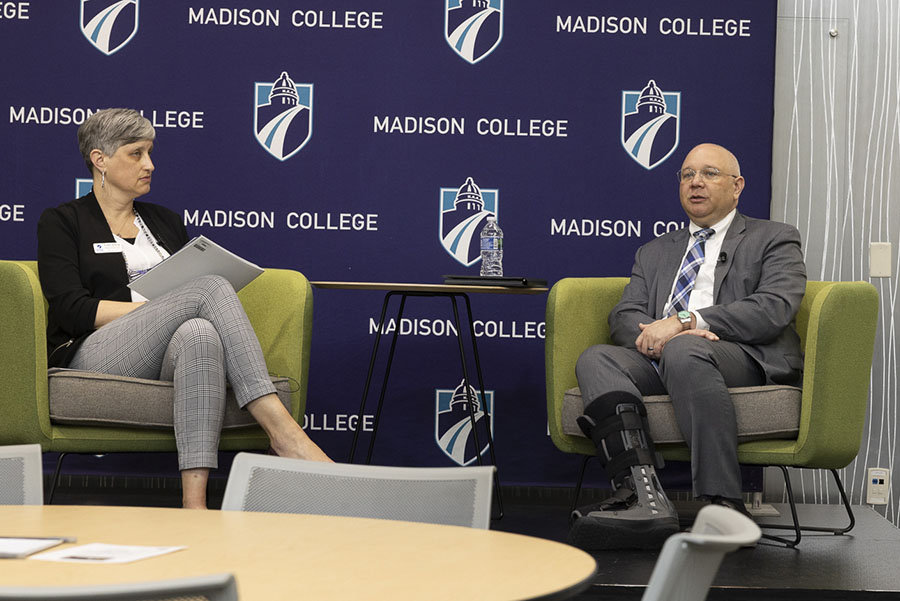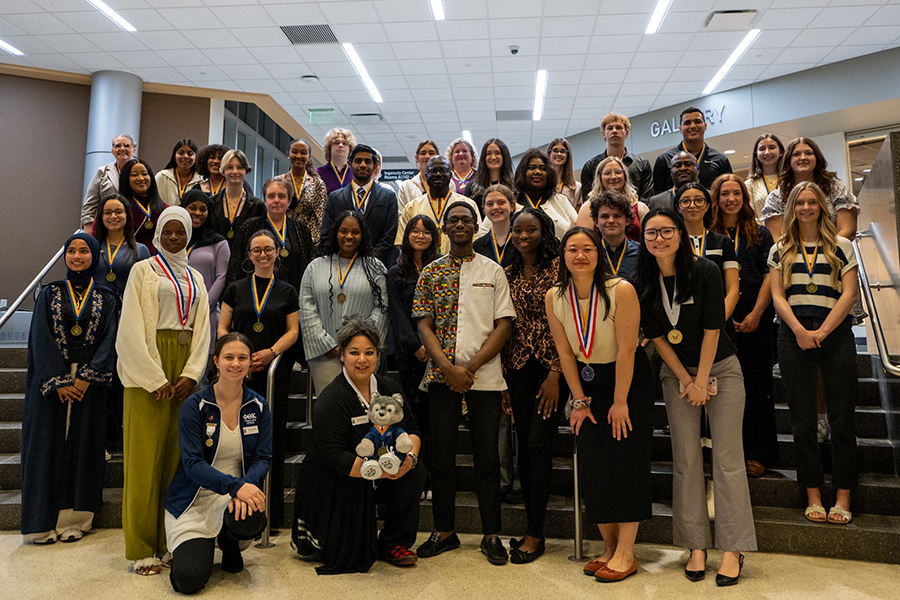Incidents harming trust of law enforcement
December 11, 2014
You have heard about what’s happening in Ferguson, Mo., Cleveland, Ohio, and Staten Island, N.Y. People have died at the hands of police officers, two officers avoided indictment in highly publicized cases, and law enforcement has been the subject of many public protests.
Citizens have begun to lose faith in the justice system and the officers that enforce it. This is a problem.
Brian Landers, the Criminal Justice program chairman at Madison College, spoke to the dehumanization of police that often comes from these cases.
“I think people need to realize that police officers come from all walks of life. We have officers that are Hispanic, black, male, female, a wide variety of ages, a wide variety of experiences, and there are also officers out there who are moms and dads, who are grandpas and grandmas, who are sons and daughters, brothers and sisters, and they’re human,” said Landers. “And they have chosen a job that is very dangerous and very stressful.”
In some communities, law enforcement officers are being seen as a force fighting against the people rather than protecting them.
Remember the good old days, when police officers would walk up and down the streets and knew everybody’s name? You know, when kids could go up to cops and get baseball cards? Back when we trusted one another?
Trust, now there’s an idea. For me, beyond the racial, sexist and other bias being discussed in the media, what this boils down to is a lack of trust.
Landers furthers this point by questioning whether those who claim the police have biases against citizens, now hold a bias against police.
Katie Borga, Madison College Law Enforcement Academy class president, explained more how this bias affects her and her fellow classmates as they prepare to go into the field.
”I think I can speak for everybody, we all want to get into it because we want to do good,” Borga said, adding that she now feels like she’s under pressure to defend her decision to go into law enforcement.
This is a perspective not frequently captured by the cameras. That’s not to say the police aren’t still partially to blame.
The argument about when to use deadly force is being intensely debated nationwide.
“People always ask, ‘Well why couldn’t you shoot him in the arm? Won’t that stop him? Oh, isn’t that good enough if you shoot somebody in the arm or you shoot somebody in the leg?’” said Borga. “That’s not what we’re trained, and that doesn’t stop a threat, and that is what we’re going for. So there is a whole other side to really understanding what’s playing, what’s at hand.”
According to Landers, programs at Madison College teach students defensive and arrest tactics. This includes control techniques, self-defense, hand-to-hand combat, the use of firearms, pepper spray, batons, how to hand cuff appropriately, and how to talk to suspects and de-escalate situations. These are standards set by the Wisconsin Department of Justice and may vary state by state.
They are also taught to asses a situation and decide what kind of force to use. There are many variables that need to be considered, Landers said.
“It’s pretty much based upon the officers’ perception of the threat to the officer,” Landers said. “Officers vary by age, size, strength, sex, skill level. … So we cannot just give a general, across the board ‘in this situation, you should do this.’ So we give them the cues of how to recognize threat and how to respond using the least amount of force possible. … When we talk about things like deadly force, there is a very firm definition of what has to be exhibited by the person, that an officer has to feel imminently threated by death or great bodily harm to themselves or another person in order to justify deadly force.”
This definition is situational and relies on individual interpretations of another person’s actions, which can account for some of the discrepancies.
So how do we mend this air of distrust between the communities of America and the police force?
We need to examine how we are training officers to assess and react in these situations. We need to rebuild the trust of the people that the officers will uphold the law and protect the community to the best of their ability.
In some cases, officers are being treated as emotionless beings who aren’t affected by the actions they take. We need to take a step back and accept them as a part of the community.
“So, before somebody is ready to judge an officer, I think they need to be reminded that that officer is human, too. And until all the facts are presented, give that person the benefit of the doubt, just like we do to a person who has been accused of a crime,” said Landers.
“Let the justice system work and even if you don’t like it, what the result was, you have to understand that it is a very stressful job and these officers have to make decisions in less than a second and it could be life or death.”































